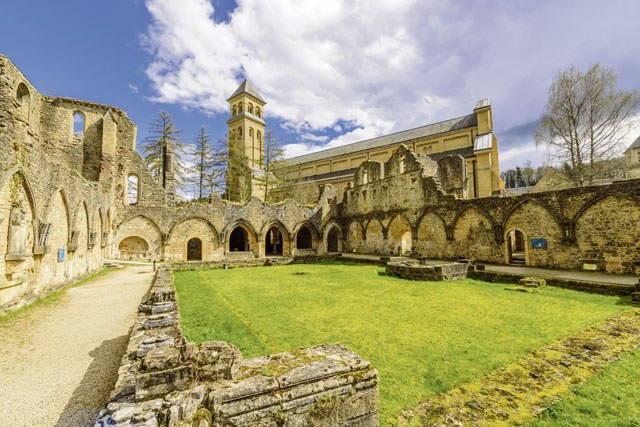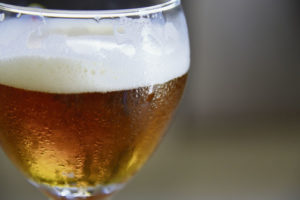
This isn’t that kind of beer story. This is about persistence, patience, and the pursuit of something greater than one’s self. At a fundamental level, this is about seeking the thing that English speakers call perfection or German speakers call mastery. And what is this thing, exactly? Belgian Trappists might call it ale.
Official Trappist breweries are rare. Out of eleven that carry the “Official Trappist Product” appellation, the six most famous ones are in Belgium. All six – Achel, Chimay, Orval, Rochefort, Westmalle, and Westvleteren – are associated with active abbeys, which is to say that Catholic monks from the Cistercian order play a daily role in producing some of the top beers in the world.
But even among this elite crop of brewers, one is routinely cited as the best of the best: Westvleteren. The Westvleteren monks are among the last people in the western world to resist the siren call of adjusting supply to meet demand. If you happen to find Westvleteren in a specialty shop, then you are likely looking at black market beer. The monks brew limited quantities, sell exclusively to individuals, and politely forbid reselling.
Should you choose to take the Westvleteren purchasing challenge, steel yourself. The process begins with a website (see sidebar), a phone number, a three-hour calling window, thousands of potential buyers, and a monk with a single phone line. Anecdotal tales of 300, 400, or even 1,000 calls to get through are common. It took me 159 re-dials to hear a human voice, and I felt like the luckiest beer geek in the world.
If a miracle strikes, and you get connected with the monk (who speaks English), then a precise pick-up protocol follows. You provide your license plate number, and the monk gives you a time and date. On that date, at that time, you show up at a nondescript loop driveway in a vehicle that carries the aforementioned license plate number. You load two cases (the maximum amount allowed) of world-class, austere-looking beer into your trunk, pay with a credit card, and nod goodbye to the tall gray-robed man who oversees the two-minute experience. And then you’re back on the road.
Therein lies the wonderful, paradoxical thing about Trappist breweries: it’s not really about the beer. In fact, you don’t have to be a beer lover to appreciate the journey. Visiting Chimay, for example, checks several boxes that would be of interest to almost anyone: scenic trip, beautiful forest paths, brilliant abbey, chanting monks, interesting history, solid brewery-affiliated restaurant with an outdoor playground, and lovely surroundings.
Ultimately, seeking Trappist ales leads to the quiet places of the world. These are monasteries, after all. They were built to encourage contemplation, solitude, and harmonious existence. In a hyper-connected world, it can be easy to become distracted from what’s truly important. You may not find perfection, but a quest to experience Trappist brewing excellence is definitely one worth taking.
The Belgian Six
Though Trappist breweries are not open to the public, all offer plenty to see, including gardens, ambience, beautiful locations, and nearby abbey-affiliated restaurants. Essentials include:

- Achel – closed Mondays; cash-only purchases allowed at the nearby brasserie. Hours and location at www.achelsekluis.org/pageNL/home.html
- Chimay – gardens and abbey grounds open to the public; gift shop in restaurant; guided tours available. Learn more at: chimay.com/en/chimay-experience
- Orval – impressive ruins and abbey shop open to the public; learn more at www.orval.be/en/27/Discovery
- Rochefort – brewery closed to public. Restaurants located in nearby town of Rochefort. A strong overview on Rochefort can be found at: belgium.beertourism.com/belgian-breweries/trappistes-rochefort
- Westmalle – short tour, nearby cafe, and shop open to public; learn more at: www.trappistwestmalle.be/en
- Westvleteren – grotto, information center, cafe and gift shop open to the public; learn more at www.sintsixtus.be/trial/bierverkoop/
To learn more about “Official Trappist Products” and how the Trappist appellation process works, visit, www.trappist.be/en/pages/logo-atp
Nate Cairney, a freelance writer who lives near Mons, Belgium, is committed to discovering the great places and experiences that Europe has to offer. He also grew up near a monastery, but the monks didn’t brew Trappist ale.


